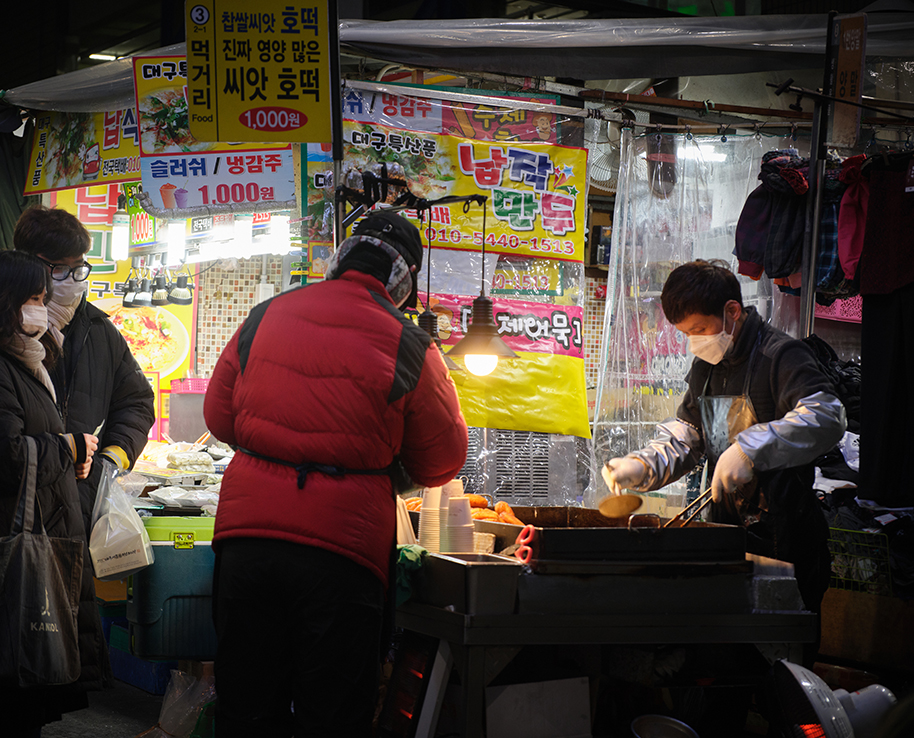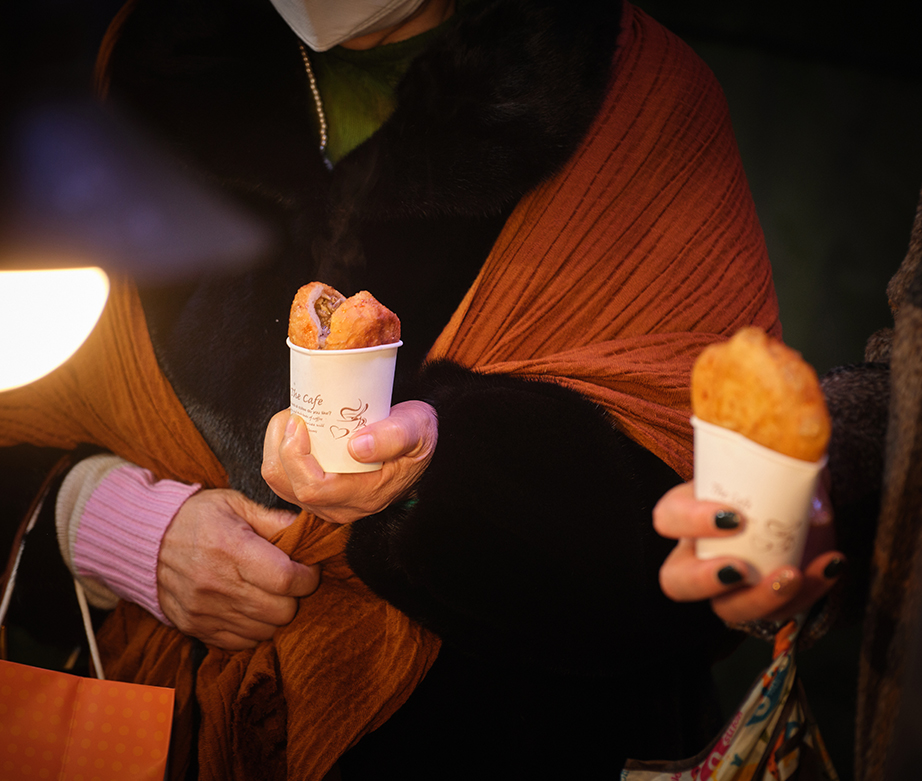February 2021

February 2021
Now that you have a grasp of what pojangmachas are, we’d like to introduce take you to the next stop and starting point in our southward trip to Daegu Metropolitan City.
![]()
Written by
Editor Y
Photographed by
Studio Kenn
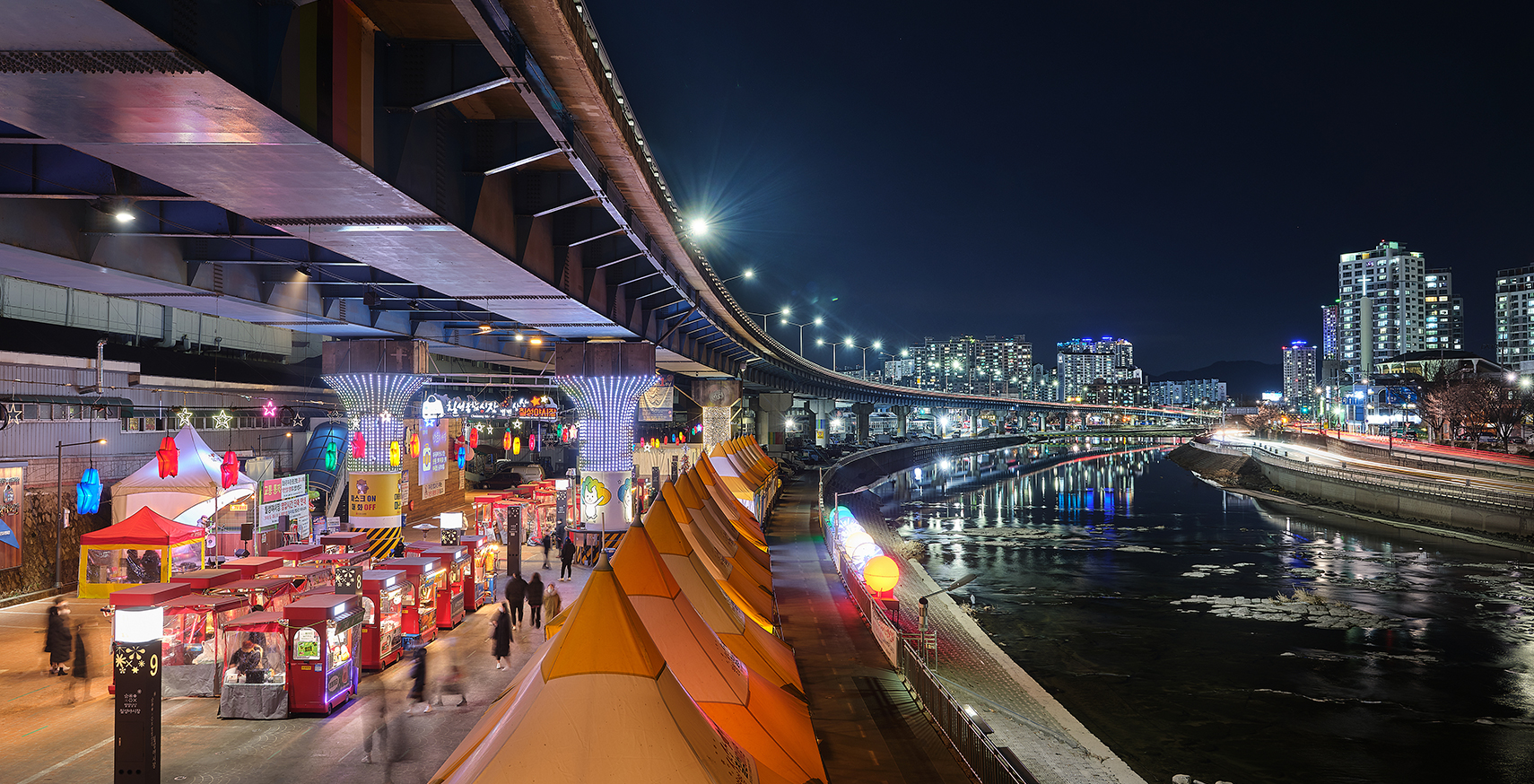
Especially famed for its pocha (short for pojangmacha) alley, Chilseong Market in Daegu abounds with red tents or tarpaulin sheets surrounded by plastic chairs and round tables. Though it appears to be a mere venue full of seafood-serving eateries, it transforms into a flashy street come nighttime. Each of its stores will unfold the red tarpaulin sheet, dousing the street with red hues.

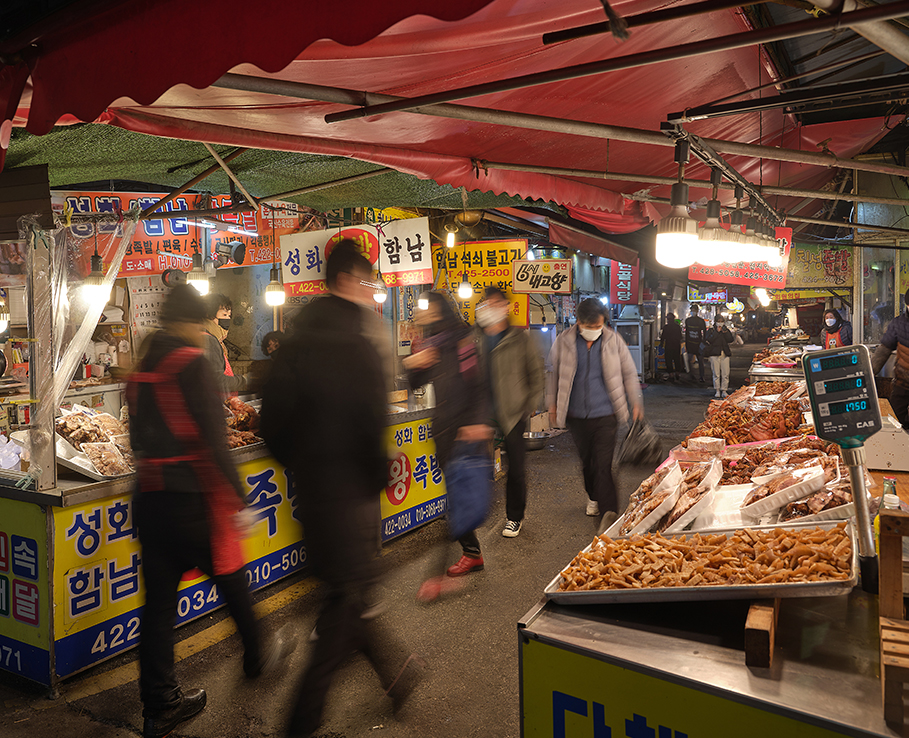
Customers tend to frequent pochas for post-meal snacks rather than full-on meals; and rather than mere snacks, a specialty complementing an alcoholic beverage.
The ‘Pocha alley’ of Chilseong Market is overwhelmingly stocked with seafood ― so much, as to be dubbed ‘Chilseong Seafood Market’ at times. Whether in the least-tempered and fresh forms like shrimp and raw fish (hoe) or as cooked dishes like the regional specialty seafood (haemul) kalguksu (hand-kneaded, ‘knife-cut’ (kal) noodles), the market boasts an assortment of marine goodness.
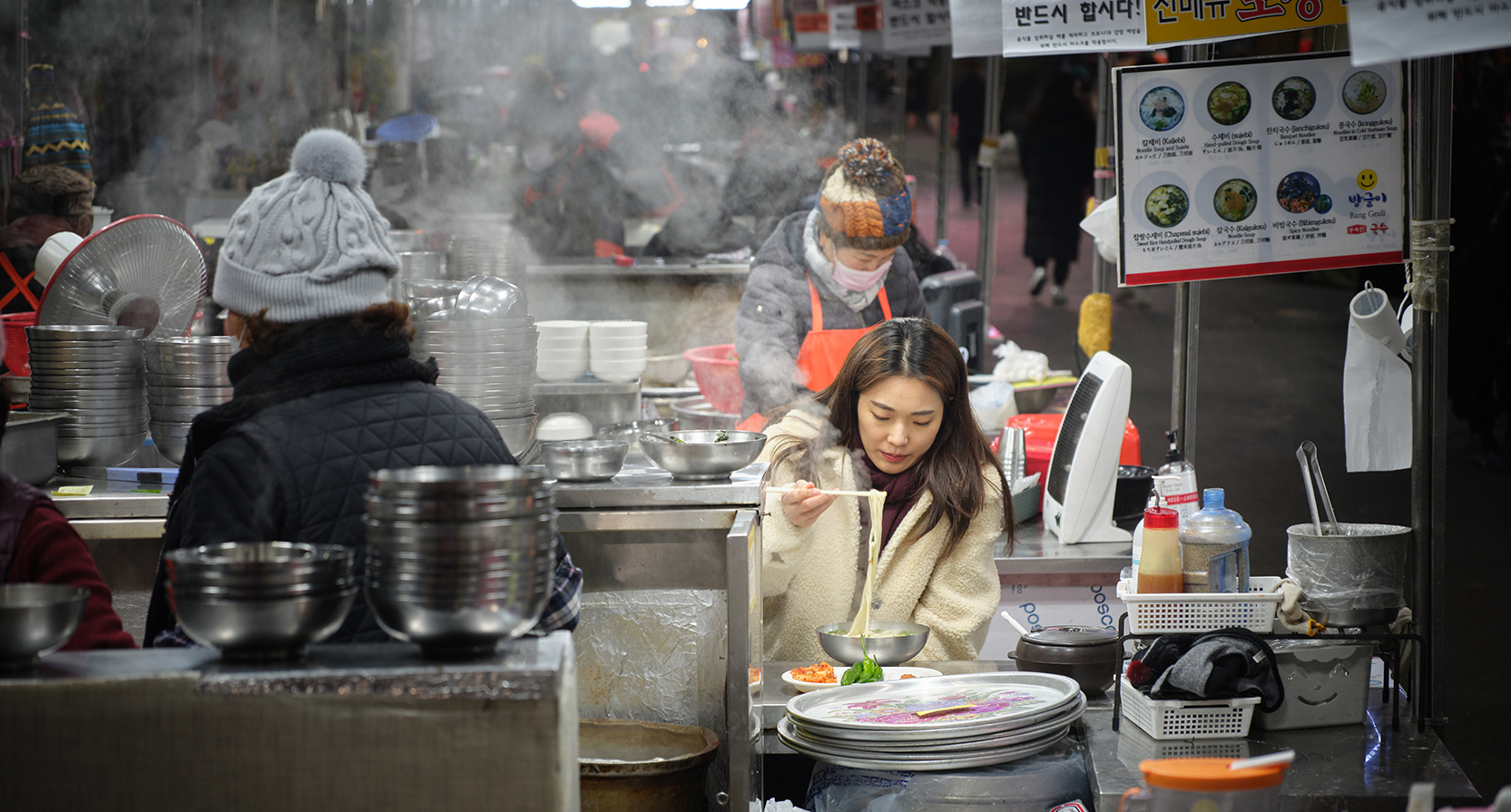
Worth noting is how many first orders upon a customer’s entry at a Chilseong Market pocha consist of soup dishes. This is because many are, by the time they drop by, well underway into their long night of drinking. Though every servicer differs from one another, pochas within the market are often very quick to fill your table with simple and easy side dishes: tempura (fried vegetables or vegetables, or onion rings), tteokbokki (spicy rice cake), mussel stew (or steamed mussel broth), rice with fish roe (albap) and spaghetti and corn cheese. A defining component of pochas of the Daegu region is water and ice served by the bucket.
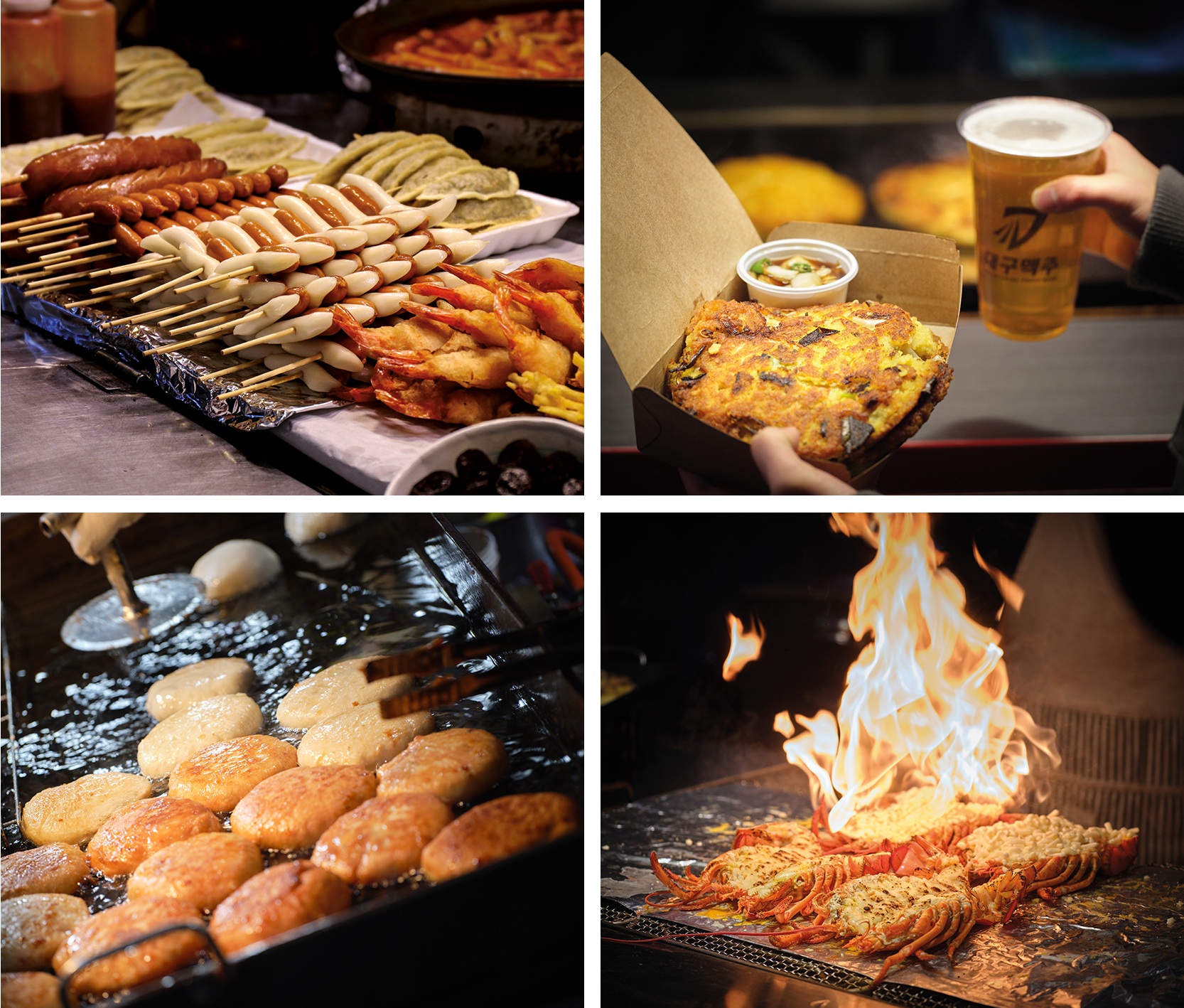 © shutterstock (Left Top)
© shutterstock (Left Top)
In the Nam-gu District of the city is Anjirang Gopchang Alley, a cluster of gopchang (beef or pork intestines, also known as ‘tripe’) and makchang (beef or pork entrails)-specializing barbecue restaurants. Forty-seven stores and counting, the first opening took place in 1979 before spanning into a proper alleyway series of approx. 500 m. The alley was selected amongst the likes of ‘Korea’s 5 Best Food-themed Streets’ in 2012 and ‘Exceptional Dine-out Spot’ for 2020.
Makchang is said to have been consumed on the Korean peninsula since the Joseon dynasty, specifically during King Seonjo’s reign. In 1567, the king is said to have rewarded his cooks gratuitously upon tasting makchang that his people prepared him for a celebratory occasion. But despite the fanfare, it wasn’t until the 1970s that makchang rose to the attention of the masses. Till then, the ‘spare part’ (a direct translation of the colloquial term, ‘boosok’ gogi (meat)) was used only to add a deeply meaty tinge to broths. It was a particular restaurant in Daegu that in 1969, grilled makchang for sale for the first time in the nation. From 1975 and onwards, the barbecue method (cooking the meat atop grills, or table-grills as seen in Korean barbecue restaurants) became mainstream.
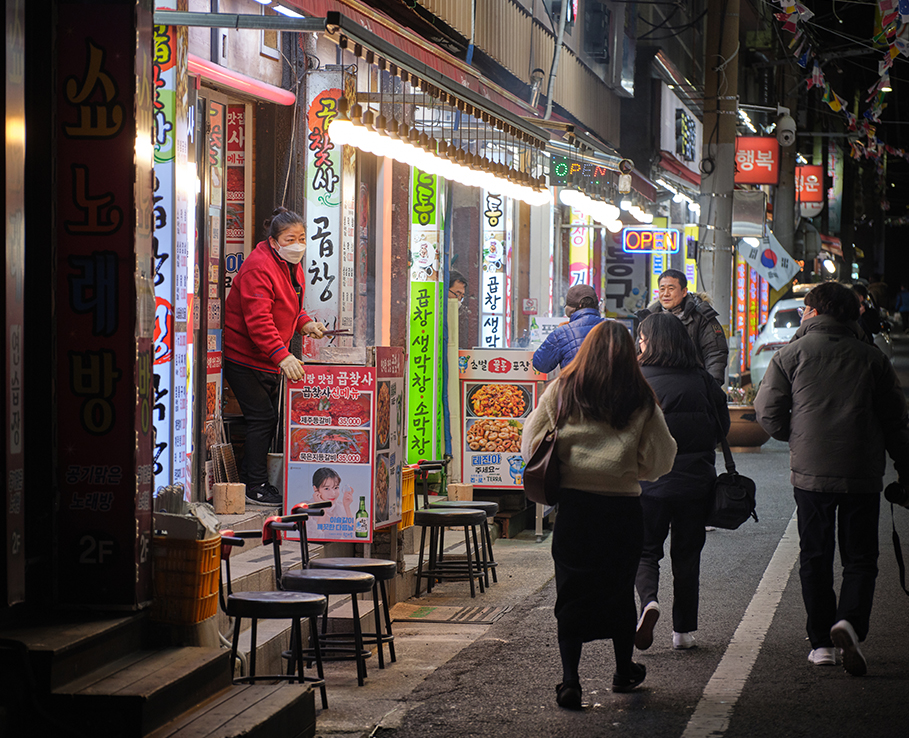
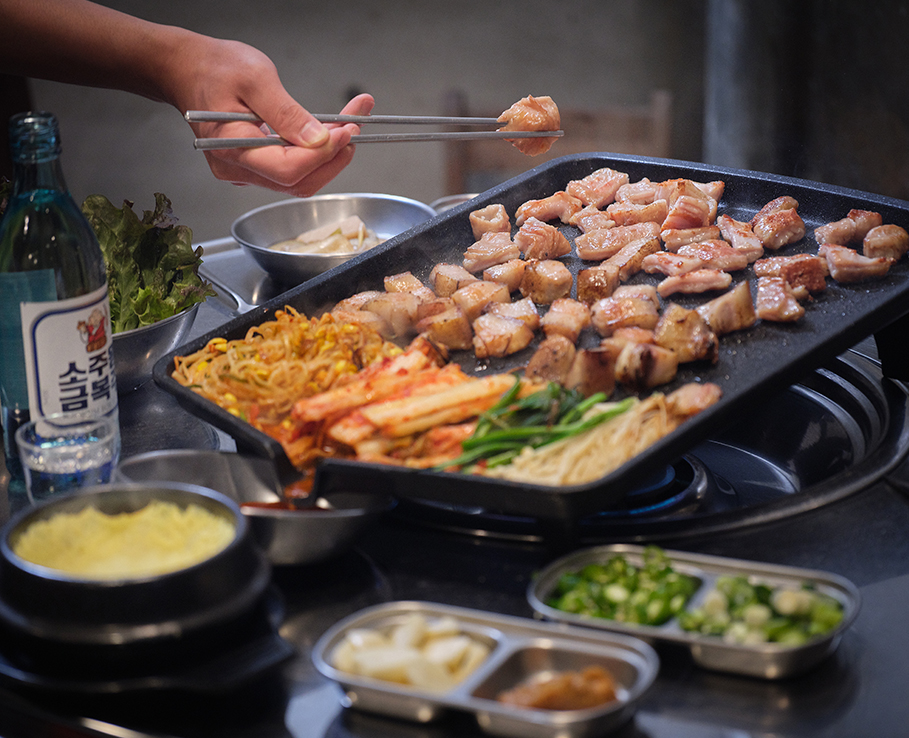
This makes it a mere half a century since makchang became widely consumed amongst Koreans. For much of Korea’s younger generations, this will come as a surprise, considering the innate familiarity many will have for the barbecue item. Within the 50 years it has been around for, makchang has established itself as a major specialty of Daegu.
The most popular way to consume makchang is to dip every bite with its custom-made sauce dubbed ‘makchang.’ It is a combination of traditional Korean barbecue sauces (doenjang, ssamjang and gochujang) with Sprite and konggaru (bean powder) with chives and green chili (cheong-yang gochu). Variations of the sauce, presented as additional options at some franchise stores nowadays, include curry powder, chili sauce as well as unaltered bean powder.
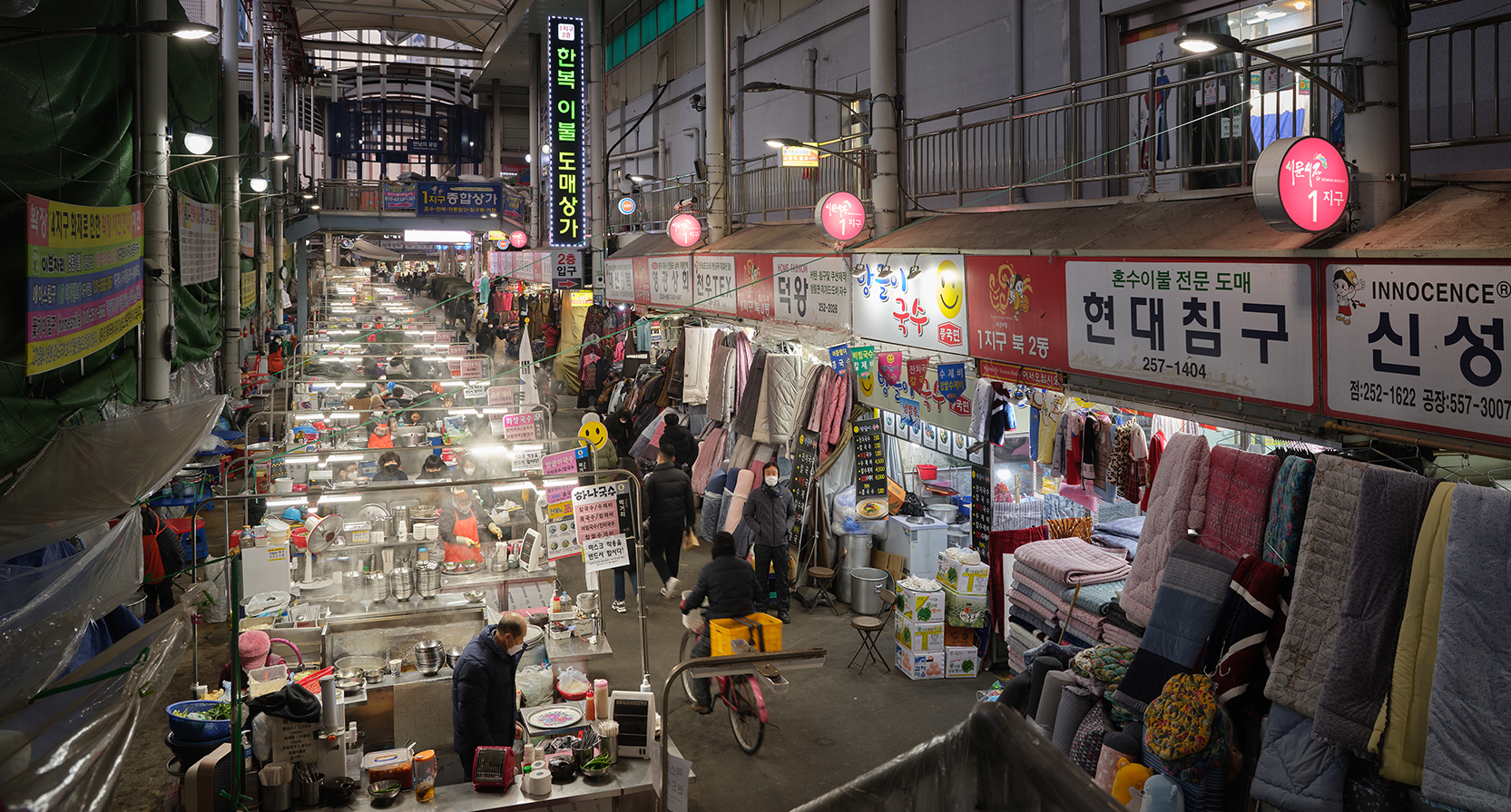
Since the late Joseon dynasty, Seomun (West gate) Sijang (market) had been the de facto largest market in the southern provinces of the Korean peninsula. To this day, it remains among the nation’s top three markets. In it are approx. 5,000 stores with an estimate of over 20,000 merchants. Visitor count is around 45,000 per weekday and 100,000 during weekends. For a tiny country like Korea, these are impressive numbers of people congregating anywhere outside of Seoul.
Separate from Seomun Market is Seomun Yasijang (Night Market), which opened its doors in June 2016. Spanning approx. 350 m, the massive market boasts 80 stalls decked out with eclectic offerings of food to feast on. It is largely divided by three sections: fusion and global food, ethnic Hansik (traditional Korean food) and street food or snacks. Among non-Korean visitors who visited Daegu in 2019, 75.1% of them made visits to the night market, making Seomun Night Market the most frequented locale in Daegu. The night markets begin operations from 7 p.m. and close at either 11 p.m. (in wintertime, from the months of December to February) or midnight (during the rest of the year), though merchants will often take 30 minutes more to set up or wrap up.
More than three-fourths
of foreign visitors who made visits
from abroad also paid a visit to
Daegu's Seomun Market.
